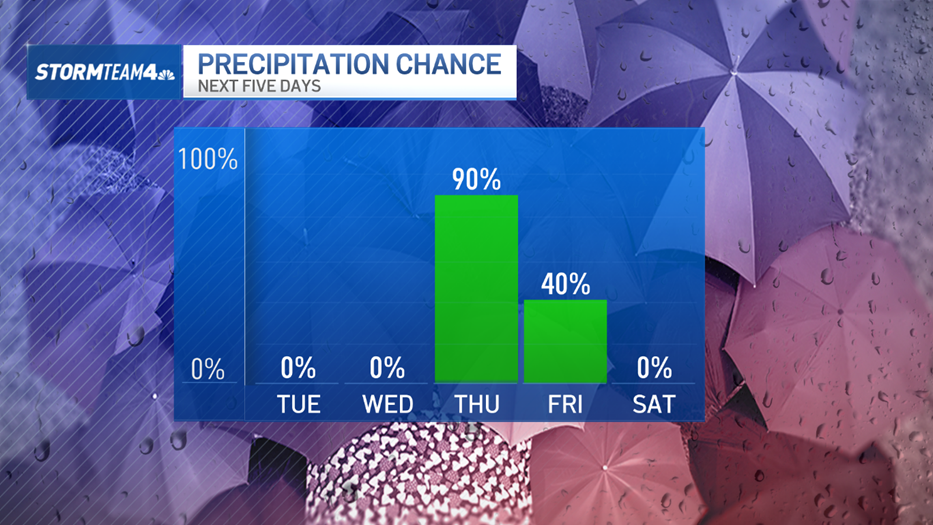New York City and 10 other New York counties are now under a drought warning a dry conditions continue, the state and city announced Monday.
A drought warning is the second of three levels in the city of taking steps to deal with the dry conditions. The third and most severe level would be a drought emergency.
The counties under the drought warning include: Bronx, Delaware, Dutchess, Greene, Kings, New York, Orange, Putnam, Queens, Richmond, Rockland, Schoharie, Sullivan, Ulster and Westchester.
Officials are asking residents in the impacted areas to take steps to conserve water.
“Recent unseasonably warm weather and lack of precipitation have led to dry conditions for many counties in New York, resulting in Hudson Valley and New York City area counties being elevated to drought warning status and a statewide drought watch,” Gov. Kathy Hochul said in a statement. “Across the state, local water restrictions and educating New Yorkers about how to help conserve water resources are crucial steps to help prevent a more severe shortage until conditions improve.”
I am declaring a statewide drought watch because of a historic shortage of rainfall.
— Governor Kathy Hochul (@GovKathyHochul) November 18, 2024
I am also elevating 15 counties in the Mid-Hudson region and in New York City to a drought warning. If you live in one of those areas, please conserve water where possible in the coming weeks. pic.twitter.com/4I6ZTxEuZM
Get Tri-state area news delivered to your inbox. Sign up for NBC New York's News Headlines newsletter.
Mayor Eric Adams issued a drought watch earlier this month and urged city residents to conserve water by taking shorter showers and fixing leaky faucets. But even with the voluntary measures, lower-than-normal rainfall since September has taken a toll on the city's sprawling network of upstate New York reservoirs.
Weather Stories
Adams said he has asked city departments to take steps to reduce water usage, and that includes less cleaning of public transportation vehicles.
Fleet washing of LIRR, Metro-North and subway trains will decrease dramatically, along with the washing of transit buses, MTA chair and CEO Janno Lieber said.
"Our city vehicles may look a bit dirtier, and our subways may look a bit dustier, but it’s what we have to do to delay or stave off a more serious drought emergency. We need New Yorkers to continue to save water, too, so we can water our parks and fill our pools this coming summer," Adams said.
More than 100 miles north of Manhattan, the Schoharie Reservoir was at less than a third of its capacity last week, exposing vast muddy flats as the water receded. Scenes were similar in the Catskill Mountains at the Ashokan Reservoir.
“The system overall is something that we are concerned about. ... The New York City system is at 63% capacity right now. Normally, we would be about 79% capacity. But inflows coming into the reservoir system are near record lows,” Paul Rush, who is in charge of water supply for the city Department of Environmental Protection, said Wednesday.
Rush, on a visit to the Schoharie Reservoir last week, said the water system needs a “significant shot of rain.”
The dry weather comes during the temporary shutdown of an upstate aqueduct for repairs. The Delaware Aqueduct, which usually supplies more than half of the city's water, was drained as part of a $2 billion project to address leaks.
Rush said the repair project was designed with points along the way during which agency officials could decide whether to continue work based on factors like supply levels and forecasts.
The repair project will be paused to restore access to the water and the work on the reservoir will begin at a later date, Adams announced Monday.
"Climate change is here, it is real, and we are going to fortify our city to deal with it," Adams said.
The state recommends taking the following steps to conserve water:
- Reuse water collected in rain barrels, dehumidifiers or air conditioners to water plants.
- Use a broom, not a hose, to clean driveways and sidewalks.
- Fix leaking pipes, fixtures, toilets, hoses and faucets.
- Wash only full loads of dishes and laundry.
- Take shorter showers or fill the bathtub partly.
- Install water saving plumbing fixtures.
- Don’t run the tap to make water hot or cold.
- Wash cars less frequently.



